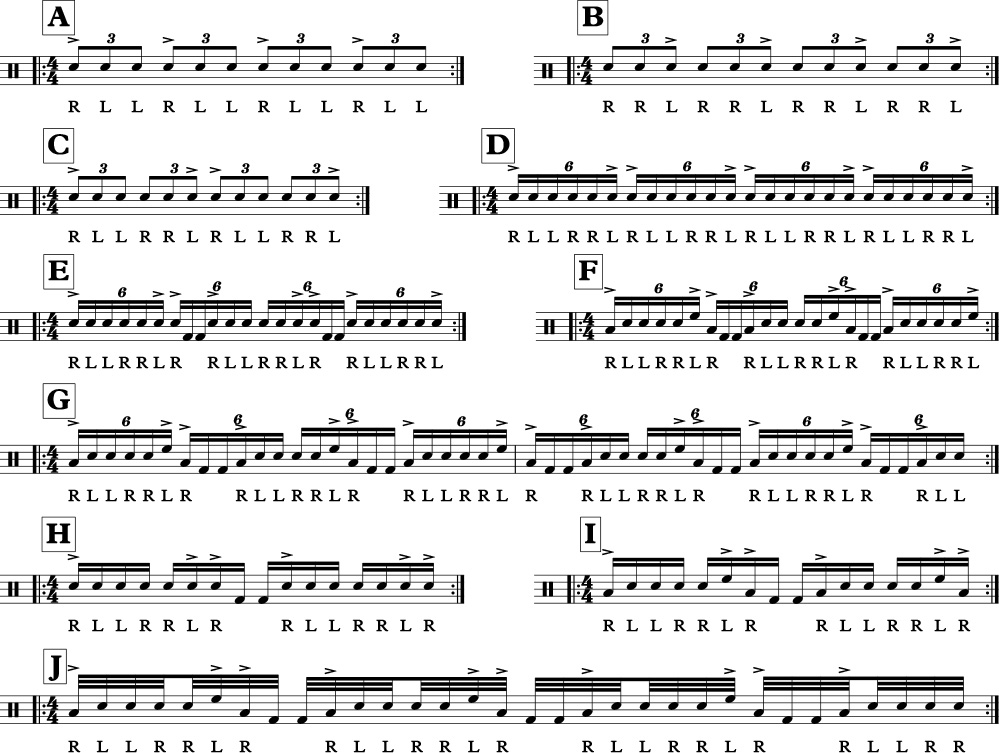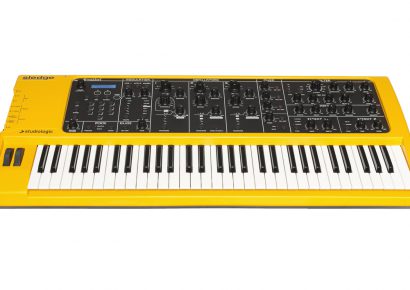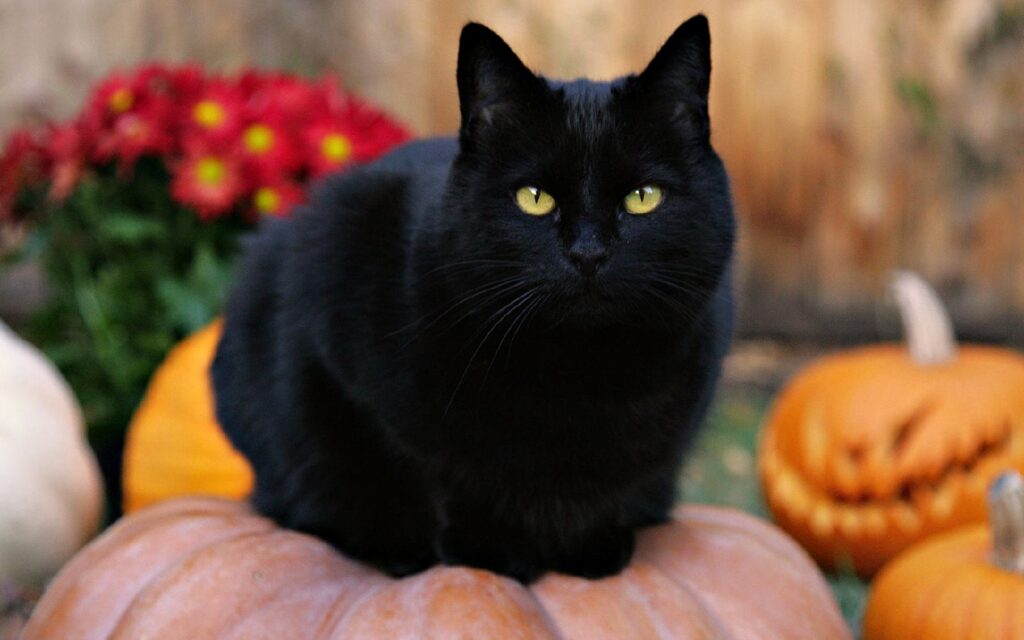Steve Gadd
In the Up Close video/book/interview, Steve Gadd basically conveyed that the 6-stroke rudiment rolled off the handswell. I couldn’t agree more, and it’s for this reason that I use the 6-stroke roll so much. There’s a simplicity about it that makes it easier to speed up; get around the drums and it doesn’t involve any feet. Just to spice things up a bit, I’m going to add a double stroke on the bass drum to see what might happen. The result is another whole set of possible applications to tinker with. Crucially though, the core of the lick is still the same 6-stroke from before – but the bass drum shifts things somewhat.
Triplets
To get the background down, Figures A and B show the two primary stickings that make up the 6-stroke roll [RLL RRL]. If you’re new to this lick, it’s advised to practice these two figures slowly and accurately first. Ensure that you are playing a nice accent where indicated, and very soft ghost notes (soft) on the non-accents. It’s absolutely crucial that this concept is accurate. Figure C shows how the two primary stickings join to make the roll. The most useful subdivision for applying the lick in a musical situation is to use 16th note triplets as opposed to 8th note triplets. Or, just think double time (Figure D). This is where you get a nice flow happening as the right hand accent is on the down beats – making it easy to count and easy to feel. Whist not notated today – apply this roll on the drums by putting the right hand accent on the floor tom and the left hand accent on the rack tom.
Combination Using The Bass Drum
Figure E shows a 9-stroke sticking that uses a combination of a 6-stroke roll, followed by a right hand accent and a double stroke on the bass drum (RFF). This shifts the start of the next sticking by three notes and breaks up the flow. However, it makes a phrase that crosses the beat and incorporates another sound. As mentioned previously, add the accents to toms for a bigger sound (Figure F). Get the placement right and it sounds a lot more complicated than it appears on paper.
Figure G shows the new 9-stroke sticking played continuously over two bars. This only accentuates the cross beat/cross bar phrase. It is handy to know that the phrase returns to starting on the beat after the span of three crotchets each time. This could aid you when learning to play the phrase. As before, the accents can move to the toms.
Different Subdivisions
Taking things a step further, we take what we now know and shift the fundamental subdivision. This is something I do quite a bit. The reason for this is actually a simple one– I like to be able to use what I can already do but in a few different ways to maximise it’s mileage. So, if you examine Figure H, you can see the now hybrid 9-stroke sticking played in 16th notes in 4/4 timing. As before, the phrase crosses the beat and is interrupted by the end of the bar. Figure I simply shows the sticking with the accents on the toms. If you want to be able to make the most of this subdivision, the suggestion is to practice it as two bars of 16th notes first and then rock out on some 32nd notes (Figure J). These are just played in double time 16ths if you want to feel it that way, but don’t forget, at most medium tempos, 32nd notes are really fast so the flow of the phrase will take a little time to get feeling right.
At least this way you can have a number of applications for different subdivisions, and if you practice this lick/phrase in context – like with a groove and the lick played as a fill for example – you’ll be more inclined to use this on a gig. Additionally, just think of the scope of this. Put the bass drums at the start of the phrase to get another perspective or just reverse the sticking etc. Another awesome application is to put the right hand accents on the ride cymbal with a bass drum and the left hand on the crash with a bass drum. Sounds very cool.
Take your time and have fun. Don’t forget the solid technique of good accents and ghost notes! It’ll make all the difference.






